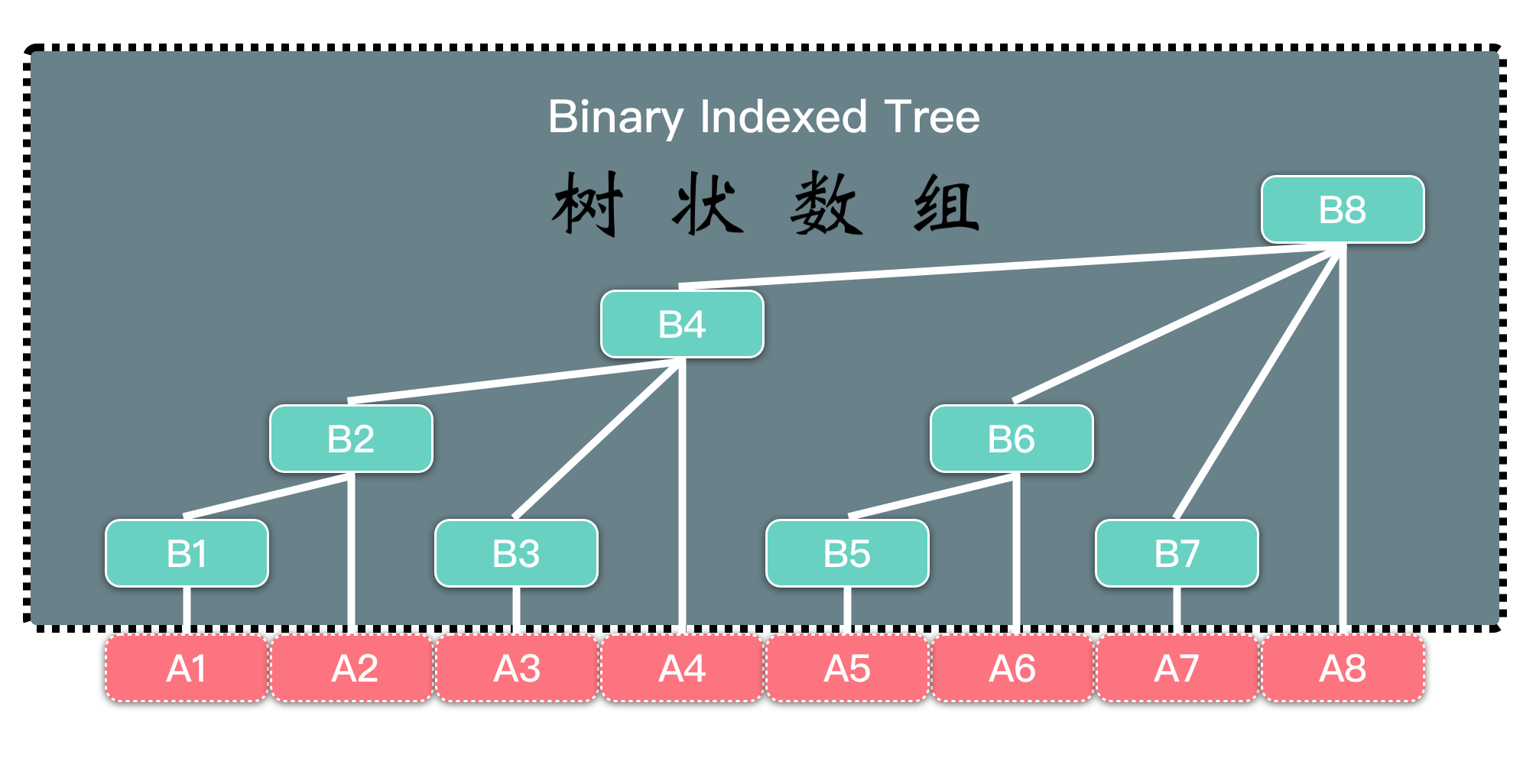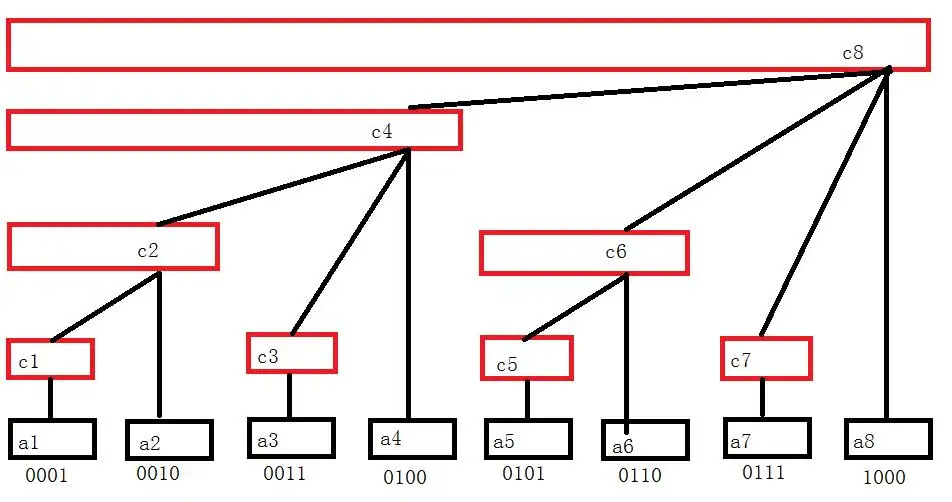数据结构-Binary Indexed Tree 树状数组

简介
树状数组或二叉索引树(英语:Binary Indexed Tree),又以其发明者命名为Fenwick树,最早由Peter M. Fenwick于1994年以A New Data Structure for Cumulative Frequency Tables为题发表在SOFTWARE PRACTICE AND EXPERIENCE。其初衷是解决数据压缩里的累积频率(Cumulative Frequency)的计算问题,现多用于高效计算数列的前缀和, 区间和。
它的功能是:
- 单点更新 **update(i, v)**: 把序列 i 位置的数加上一个值 v
- 区间查询 **query(i)**: 查询序列 [1… i] 区间的区间和,即 i 位置的前缀和
修改和查询的时间代价都是 O(log n),其中 n 为需要维护前缀和的序列的长度。

树状数组的主要结构就是父节点存储大范围,子节点再进行划分范围,直到节点为一个。
c8表示整个数组,其子节点为c4,c6,c7,a8,各自子节点又有自己的子节点。如果要求数组a的区间和,比如说 [a5,a7] 区间,从[0,a7]中求和,然后减去和从[0,a4]中查找和。
�
树状数组和线段树具有相似的功能,还有一些区别:
树状数组能有的操作,线段树一定有;线段树有的操作,树状数组不一定有。但是树状数组的代码要比线段树短,思维更清晰,速度也更快,在解决一些单点修改的问题时,树状数组是不二之选。可以理解为树状数组是线段树的精简版。
那么怎么知道$ C_i $表示的是哪个区间呢?这时我们引入一个函数lowbit
1 | |
当$ x=88 : 88_{(10)} = 1011000_{(2)} $最低位 1 和后面的 0 组成$ 1000 $然后$ 1000_{(2)} = 8_{(10)} $即$ 1000_{(2)} $在十进制是 $ 8 $,所以 $ C_{(88)} $共包含 8 个 a数组中的元素。
使用 lowbit 函数,我们可以实现很多操作,例如单点修改,将$ a_{x} $加上$ k $ ,只需要更新 $ a_{x} $的所有上级:
1 | |
求前缀和
1 | |
区间求和
在求区间和时我们需要再维护一个差分数组$ b $当我们对树状数组的一个前缀 r 求和,即$ \sum_1^na_i $,由差分数组定义得$ a_i=\sum_{j=1}^ib_j $进行推导$ \sum_1^na_i
=\sum_1^na_i \sum_{j=1}^ib_j
=\sum_{i=1}^rb_i (r-i+1)
=\sum_{i=1}^rb_i (r+1)-\sum_{i=1}^rb_i j $所以区间和可以用两个前缀和相减得到,因此只需要用两个树状数组分别维护 $ \sum b_i $ 和 $ \sum i b_i $,就能实现区间求和。
差分
差分(difference)又名差分函数或差分运算,差分的结果反映了离散量之间的一种变化,是研究离散数学的一种工具。读者熟悉等差数列:$ a_1 a_2 a_3……a_n…… $,其中$ a_{n+1}= a_n + d( n = 1,2,…n ) $d为常数,称为公差, 即 $ d = a_{n+1} -a_n $, 这就是一个差分, 通常用$ D(a_n) = a_{n+1}- a_n $来表示,于是有$ D(a_n)= d $ , 这是一个最简单形式的差分方程。
1 | |
框架
1 | |
1 | |
应用
Range Update and Range Queries(范围更新和范围查询)
1 | |
案例
剑指 Offer 51. 数组中的逆序对
1 | |
315. 计算右侧小于当前元素的个数
1 | |
6198. 满足不等式的数对数目
1 | |
资料
可视化 :https://visualgo.net/zh/segmenttree?slide=1
https://www.geeksforgeeks.org/binary-indexed-tree-range-update-range-queries/?ref=gcse
https://www.geeksforgeeks.org/binary-indexed-tree-or-fenwick-tree-2/?ref=gcse
